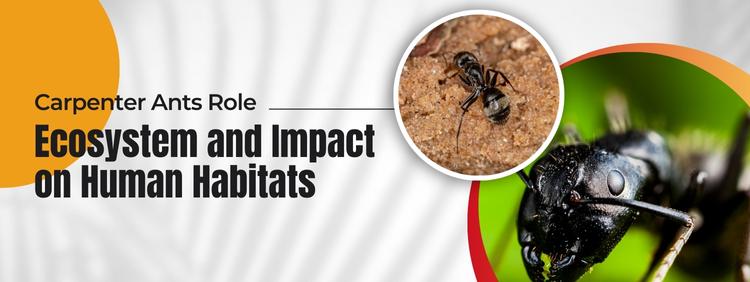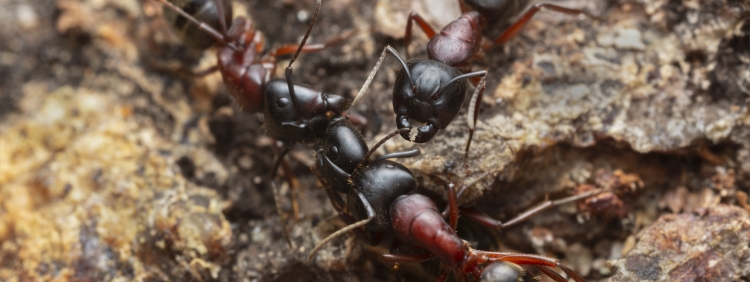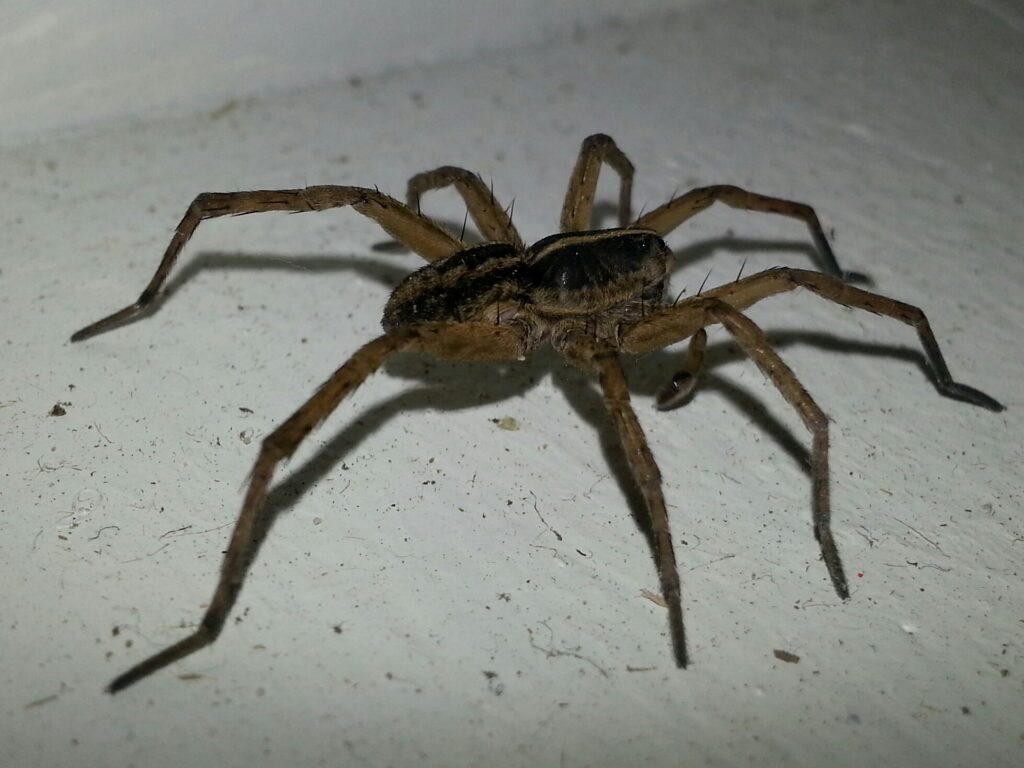 As a homeowner, being aware of the pests sharing your environment can help you maintain a balance that favours both biodiversity and human comfort. In this blog, we're focusing on one such critter that is often misunderstood - the carpenter ant. These insects play both a beneficial and potentially damaging role; we must understand this delicate balance.
Not only will we be exploring the ecological contribution of these industrious insects, but we'll also delve into the impact they could potentially have on homes, specifically in Thornhill. Carpenter ants are renowned architects of the insect world, but when they decide to relocate their construction site into our homes, it's time to bring in the experts. In light of this, we'll also introduce you to our recommended pest removal service.
You'll learn to recognize the signs of a carpenter ant infestation and determine the best course of action to address it. So whether you're already dealing with an ant intrusion, concerned about future possibilities, or just want to understand the relationship between your home and the ecosystem, keep reading! Remember, the more informed we are, the better we can coexist with nature while protecting our dwellings.
Of course, we'll also discuss 'how to get rid of ants', specifically focusing on carpenter ant removal. But before we jump into solutions, let's learn a little more about these creatures and their role in our world.
As a homeowner, being aware of the pests sharing your environment can help you maintain a balance that favours both biodiversity and human comfort. In this blog, we're focusing on one such critter that is often misunderstood - the carpenter ant. These insects play both a beneficial and potentially damaging role; we must understand this delicate balance.
Not only will we be exploring the ecological contribution of these industrious insects, but we'll also delve into the impact they could potentially have on homes, specifically in Thornhill. Carpenter ants are renowned architects of the insect world, but when they decide to relocate their construction site into our homes, it's time to bring in the experts. In light of this, we'll also introduce you to our recommended pest removal service.
You'll learn to recognize the signs of a carpenter ant infestation and determine the best course of action to address it. So whether you're already dealing with an ant intrusion, concerned about future possibilities, or just want to understand the relationship between your home and the ecosystem, keep reading! Remember, the more informed we are, the better we can coexist with nature while protecting our dwellings.
Of course, we'll also discuss 'how to get rid of ants', specifically focusing on carpenter ant removal. But before we jump into solutions, let's learn a little more about these creatures and their role in our world.
What Is The Role Of Carpenter Ants In The Ecosystem?
When we spot a single ant, it's easy to underestimate its importance in the grand scheme of things. Still, these tiny creatures, especially carpenter ants, hold a significant role in our ecosystem. Unlike termites, carpenter ants don't eat the wood they tunnel through, and instead, these ants help speed up the decomposition process of dead, decaying trees. In doing so, nutrients get returned faster to the soil, promoting healthier and more diverse plant growth. Furthermore, carpenter ants are also vital components in the food chain. In the wild, they serve as food for a wide assortment of wildlife, including birds, mammals, and other insects. This highlights the delicate interplay of nature, where even the smallest members are integral to the cycle of life. But, as is often the case, there's a downside to this ecological role. When the wood that carpenter ants target for their nests is an integral part of your home, this symbiotic relationship turns problematic. Recognizing an infestation early can save homeowners much distress and structural damage. If you catch a glimpse of what appear to be large, black ants in your home, especially in the kitchen or bathroom areas, or see piles of sawdust-like material around your property, you may be witnessing warning signs of a pest infestation. Carpenter ants prefer damp, decayed wood for building nests, though they can also burrow into healthy wood. Check for small openings on the surface of the wood, similar to small holes, which may serve as entry or exit points for the ants. Also, noticing a significant rise in the population of ants during the nocturnal hours, when they are the most active, may further indicate their residence within your home. Addressing these issues at the earliest can protect your home from worsening damage. Our trained professionals at Truly Nolen Canada can provide an accurate diagnosis and the best solution for carpenter ant removal. We employ various methods ranging from sprays and dusts to remove ants to permanent structural modifications aimed at preventing future infestations. The key is understanding how to get rid of ants while balancing their ecological role, thereby preserving the symbiotic relationship without disturbing our human habitats too much. Remember, tackling these creatures is more about pest removal than being ecologically responsible.How Do Carpenter Ants Impact Human Habitats?
Unbeknownst to many homeowners, carpenter ants don't just pose a minor annoyance in your Thornhill home, but they can significantly impact human habitats too. Unlike termites, carpenter ants do not eat wood but love making their nests in it. A sure sign of their presence is the distinct small piles of sawdust-like material they leave behind, which are the discarded remains of your home's wooden structures.- Over time, as a carpenter ant colony expands, the cumulative damage can lead to destabilized structures and costly repairs.
- Carpenter ants can also infiltrate food supplies, particularly those that are sweet or protein-based, and apart from being a nuisance, this could be a potential health hazard.
- Though not typically aggressive, these ants can bite if disturbed or threatened, potentially causing skin irritation or allergic reactions in some people.
 Furthermore, if the carpenter ant colony manages to find its way into your kitchen, they can readily infiltrate your food supplies. Their dietary preferences veer towards the sweet and protein-based, making a majority of your pantry a potential feast for these intruders. Surely, sharing your breakfast with an army of ants is not a pleasant experience. Beyond being an annoyance, this has potential health implications, as their presence could potentially contaminate your food.
While these ants aren't typically labelled as a direct threat to humans, disrupting their activities does carry the risk of defensive biting. Even though these bites aren't fatal, they can cause irritation and discomfort to the skin. Moreover, individuals who are allergic can react more severely to these bites, leading to heightened skin reactions. While not as dangerous as other pests, the risk factor associated still warrants attention and action.
Furthermore, if the carpenter ant colony manages to find its way into your kitchen, they can readily infiltrate your food supplies. Their dietary preferences veer towards the sweet and protein-based, making a majority of your pantry a potential feast for these intruders. Surely, sharing your breakfast with an army of ants is not a pleasant experience. Beyond being an annoyance, this has potential health implications, as their presence could potentially contaminate your food.
While these ants aren't typically labelled as a direct threat to humans, disrupting their activities does carry the risk of defensive biting. Even though these bites aren't fatal, they can cause irritation and discomfort to the skin. Moreover, individuals who are allergic can react more severely to these bites, leading to heightened skin reactions. While not as dangerous as other pests, the risk factor associated still warrants attention and action.
What Are The Signs Of Recognizing Carpenter Ants In A Home?
If you've ever spotted a rather large ant in your home, chances are it was a carpenter ant. These bothersome creatures are significant not just in size but also in the potential damage they can cause. Recognizing their presence is the first critical step toward removal. Here are specific signs to look out for:- Ant Sightings: The most blatant sign of a problem? Seeing the ants themselves. Carpenter ants are generally larger than most ants and range in colour from black to brown.
- Ant Trails: Carpenter ants often form lanes foraging for food, and if you identify a consistent line of ants marching around, it may indicate a nearby colony.
- Noises: Weirdly enough, if you listen closely, you might hear their activities. A faint rustling sound within your walls or wooden structures could signal a functioning colony.
- Wood Shavings: A surefire sign of carpenter ants is the appearance of fine wood shavings beneath wooden items. Remember, unlike termites, they burrow into wood to form their nests — they don’t eat it.
- Structural Damage: Over time, damage from these ants can weaken the integrity of wooden structures. Sagging floors, hollow-sounding wood, or doors that don’t close properly could all be signs of an infestation.

